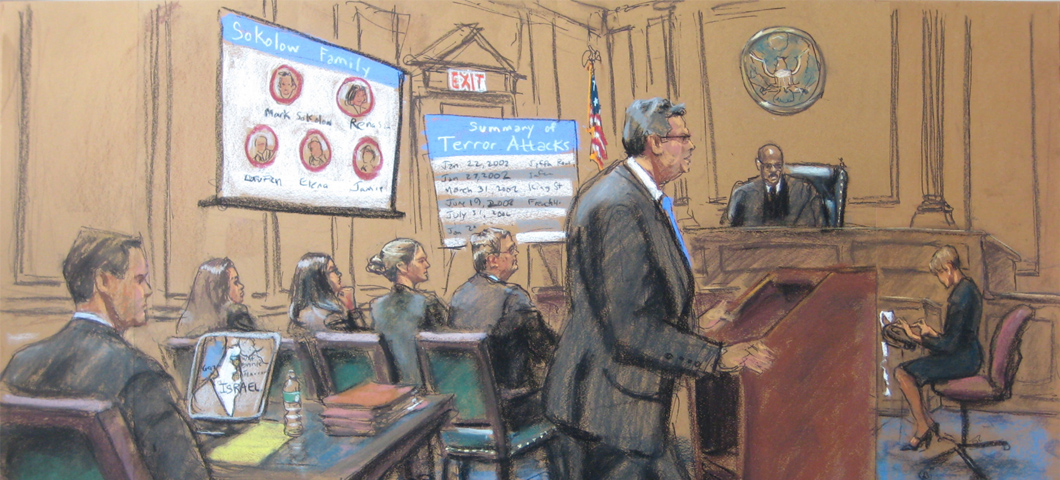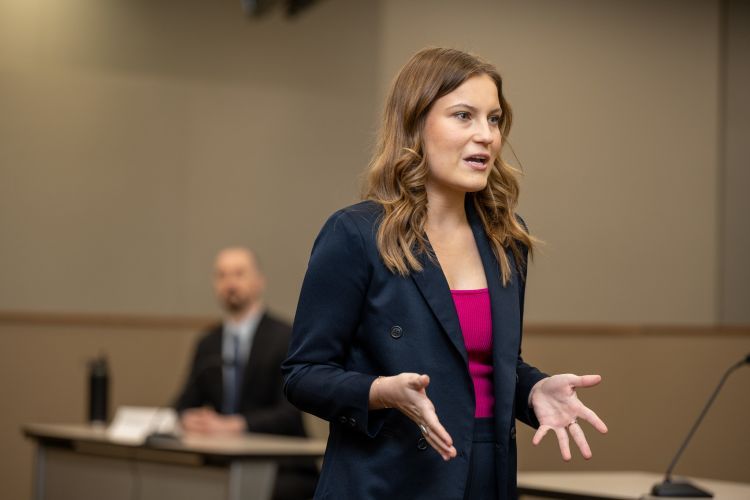Browsing the Complexities of Test Presentations: Tips for Seamless Shipment and Engaging Disagreements
In the realm of lawful proceedings, the art of test presentation stands as a crucial factor of success. As lawyers navigate the complex web of court dynamics, the capability to seamlessly supply arguments and proof while captivating the court's focus ends up being paramount. The intricacies inherent in trial discussions require a fragile equilibrium of skill, strategy, and skill. By honing strategies that make sure a sleek delivery and crafting compelling debates that reverberate with the audience, lawyers can considerably improve their campaigning for. In a world where persuasion preponderates, understanding the complexities of trial discussions is not just an alternative but a necessity for those seeking to prevail in the court.

Recognizing Trial Objectives
To successfully browse a test, it is crucial to have a clear understanding of the goals that require to be achieved. Before stepping into the court, legal teams need to specify their objectives and wanted outcomes. These goals act as guiding principles throughout the trial, shaping techniques and influencing decision-making processes.
Comprehending trial goals includes a detailed evaluation of the instance, lawful criteria, and the customer's finest rate of interests. Trial Presentations. It needs a careful exam of the realities, recognizing crucial concerns, and expecting prospective difficulties. By establishing certain and quantifiable goals, lawyers can customize their presentations and arguments to align with the wanted outcomes
Additionally, a clear understanding of test purposes allows legal teams to focus on evidence, witnesses, and legal debates properly. It permits the advancement of a coherent story that reverberates with the judge and jury, reinforcing the general case discussion.

Organizing Proof Properly
Having a clear understanding of trial purposes lays the foundation for arranging evidence effectively in lawful proceedings. By straightening the presentation of proof with the preferred end results of the trial, lawful teams can reinforce their disagreements and enhance their persuasiveness.
One more crucial element in organizing proof effectively is developing a logical flow. Offering evidence in a consecutive and systematic way can aid build an engaging story that supports the lawful debates being made. Furthermore, making use of visual aids such as timelines, graphes, or graphs can better improve the company of proof and assist in clearing up intricate relationships or sequences of events.
In addition, making certain that all evidence presented is acceptable and pertinent to the situation is crucial. Inadmissible or pointless proof can diminish the strength of the disagreement and possibly damage the integrity of the here and now party. For that reason, a careful testimonial and option procedure should be undertaken to include only the most impactful and legitimately sound evidence in the test presentation.
Crafting Convincing Narratives
Crafting compelling narratives plays a critical function in providing convincing disagreements throughout lawful process. A well-crafted story has the power to astound the audience, stimulate feelings, and inevitably guide the choice in support of the here and now party. When constructing a narrative for a test discussion, it is vital to develop a clear story that highlights bottom lines and attaches them in a systematic fashion. Begin by detailing the truths of the situation in a compelling way, guaranteeing that the sequence of occasions is very easy to adhere to. Present personalities properly, giving history info that helps the audience recognize their actions and inspirations. In addition, integrating vibrant summaries and appealing language can bring the narrative to life, making it extra unforgettable for the discretionary. By weaving with each other evidence, testimony, and lawful disagreements into a natural and influential narrative, legal specialists can successfully promote for their clients and boost the possibility of a favorable end result in the court.
Understanding Visual Help
Reliable use visual help is key to improving the influence and quality of trial presentations. Aesthetic help, when utilized tactically, have the power to streamline complex info, enhance key points, and leave an enduring impact on the court and jury. To grasp aesthetic help in test discussions, it is essential to guarantee that they are clear, succinct, and pertinent to the debates being made.
When incorporating visual aids, such as charts, charts, photos, or timelines, right into a test presentation, it is important to keep them visually appealing yet expert. The visuals ought to match the verbal disagreements, offering a graph of the info being talked about without overwhelming the audience with unnecessary details.
Furthermore, practicing with the visual help ahead of time is official website crucial to make sure a seamless shipment during the test. Acquainting oneself with the web content, shifts, and timings of each visual aid can assist preserve the circulation of the presentation and prevent technological problems that may arise.
Supplying Impactful Closing Arguments
An engaging closing disagreement serves as the culmination of a test discussion, encapsulating the core story and convincing the discretionary in the direction of a positive decision. To deliver an impactful closing debate, it is vital to succinctly evaluate essential factors, highlight the staminas of your case, and my latest blog post address any kind of weaknesses in a tactical fashion. Begin by detailing the main debates that support your customer's setting, emphasizing why the proof presented throughout the test supports your story. It is important to create a feeling of cohesion and clearness, directing the court and jury in the direction of the preferred conclusion.
Moreover, incorporating emotional charm can additionally enhance your closing debate. Inevitably, a well-crafted closing debate need to leave a lasting impression, compelling the judge and jury to rule in your client's favor.
Conclusion
In conclusion, grasping trial presentations involves comprehending goals, organizing evidence, crafting narratives, utilizing aesthetic help, and supplying impactful closing debates. By applying these approaches successfully, lawyers can provide their situation perfectly and make compelling arguments in the court room. It is critical to browse the intricacies of trial presentations with accuracy and ability to accomplish success in legal click for source proceedings.
By straightening the discussion of evidence with the desired results of the trial, lawful teams can reinforce their debates and improve their persuasiveness (Trial Presentations). To grasp visual help in test presentations, it is crucial to make certain that they are clear, succinct, and relevant to the arguments being made
An engaging closing disagreement serves as the end result of a test presentation, enveloping the core narrative and persuading the court and jury in the direction of a positive decision. Begin by laying out the primary arguments that sustain your client's placement, highlighting why the evidence offered throughout the trial sustains your narrative.In verdict, grasping test presentations involves comprehending objectives, arranging evidence, crafting stories, utilizing aesthetic aids, and providing impactful closing arguments.
Comments on “Essential Skills for Crafting Persuasive Trial Presentations: A Comprehensive Guide”